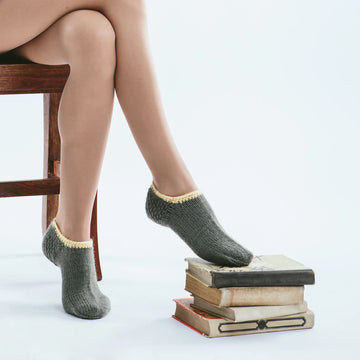Strivesox: Support for Numbness and Tingling in the Calves
Many people experience tingling or numbness in their legs, especially after sitting for long periods. While this is often harmless, it can also indicate underlying health issues. Knowing when it’s just temporary and when it signals something serious can help you take the right action—sometimes that includes using products like Strivesox compression socks to improve circulation and relieve symptoms.
Common Causes of Calf Numbness
Numbness in the left or right calf, or tingling in the lower legs and feet, is often linked to posture or physical activity. These include:
-
Prolonged sitting – Pressure on nerves and muscles restricts blood flow
-
Intense exercise – Activities like running can temporarily compress nerves
-
Tight clothing – Especially socks with tight elastic that restrict circulation
In these situations, the tingling usually disappears on its own. However, when symptoms persist or become frequent, they may point to more serious health issues.
When Calf Numbness Might Signal a Health Problem
Some chronic or recurring cases of numbness may be related to medical conditions, such as:
-
Diabetic Neuropathy
Damage to nerves due to diabetes; symptoms include numbness, cramping, and poor balance. -
Peripheral Artery Disease (PAD)
Caused by narrowed arteries due to plaque buildup (atherosclerosis), leading to cold legs, numbness, and hair loss on the limbs. -
Tarsal Tunnel Syndrome
Compression of the tibial nerve near the ankle; results in pain, burning, and numbness radiating to the calves. -
Multiple Sclerosis (MS)
A chronic condition of the central nervous system; early signs include tingling, muscle spasms, and weakness in the legs.
Home Remedies for Calf Numbness
If your symptoms are mild and infrequent, you can try a few at-home solutions to improve blood flow and ease discomfort:
-
Stay hydrated
Proper hydration supports nerve function and circulation. -
Avoid stimulants
Alcohol and tobacco negatively affect blood vessels and can worsen symptoms. -
Elevate your legs
Resting with your legs up helps improve venous return. -
Avoid tight socks or pants
Choose clothing that allows for healthy blood flow. -
Massage and stretches
Stimulates circulation and reduces nerve compression.
How Strivesox Compression Socks Can Help
If the tingling or numbness is caused by venous insufficiency or poor circulation, Strivesox compression socks offer proven relief. Designed with graduated compression, they promote healthy venous return and help:
-
Reduce swelling and heaviness
-
Prevent blood pooling
-
Support vein valve function
-
Relieve symptoms like tingling, numbness, and fatigue
For noticeable symptoms, ASQUAL Class 2 compression socks or tights are recommended. These are especially helpful for individuals with mild venous disease or those who stand or sit for long periods.
Additional Relief: Heat, Ice, and Massage
To further ease numbness and tingling:
-
Use ice packs to reduce inflammation
-
Apply warm compresses to encourage blood flow
-
Massage your calves and feet to improve circulation and relax tense muscles
Know When to See a Doctor
While Strivesox and home methods are helpful, chronic or unexplained numbness must be evaluated by a medical professional. If symptoms persist or occur without a clear cause, consult a doctor to rule out more serious conditions and receive proper treatment.




